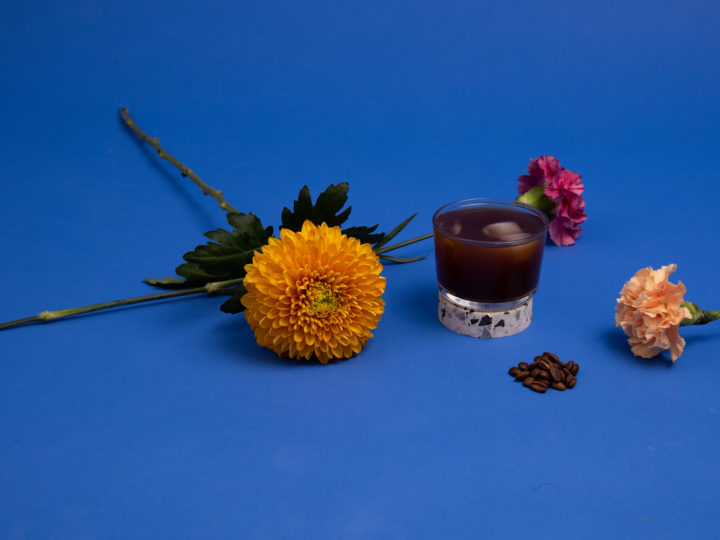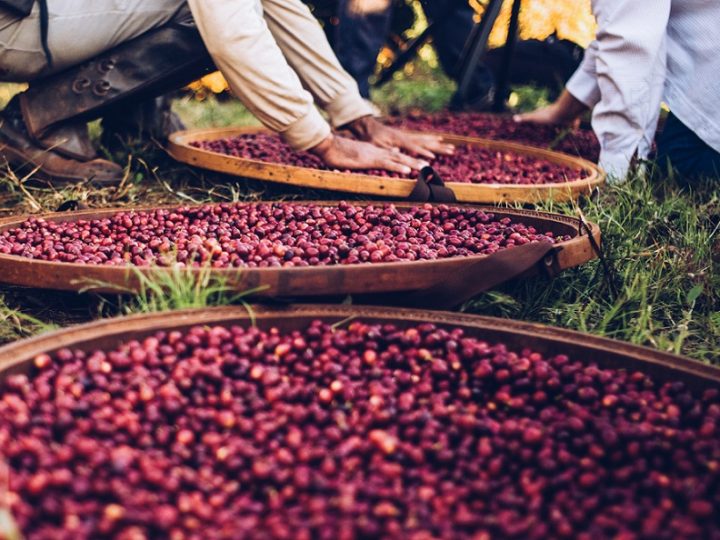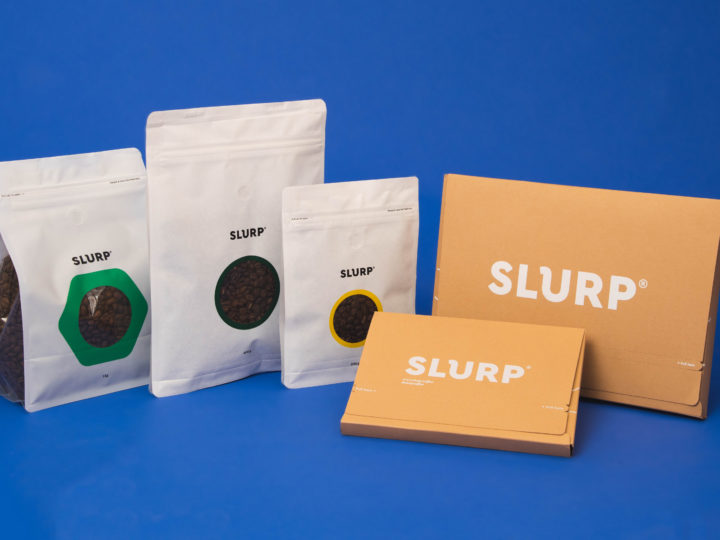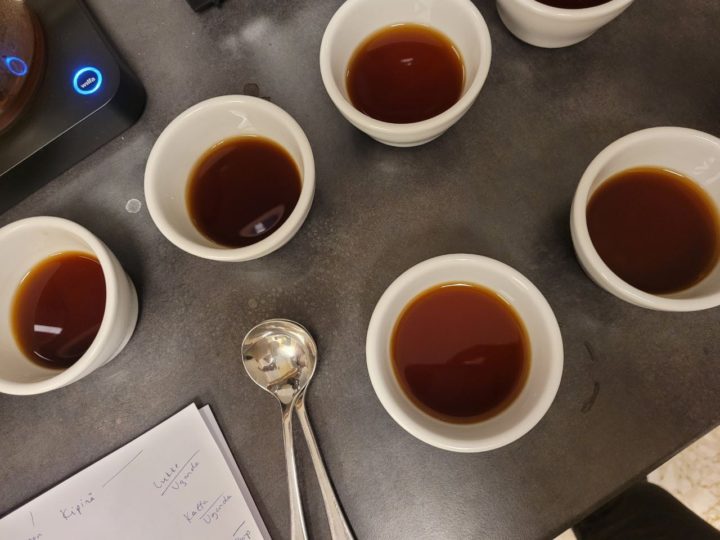This year’s first Roastery Days event was organised in cooperation with Kaffa Roastery in January. The event was a great success! We will notify of upcoming Roastery Day events in our newsletter and on the paahtimopaivat.fi website. Stay tuned!
Workshop: Sample Roasting
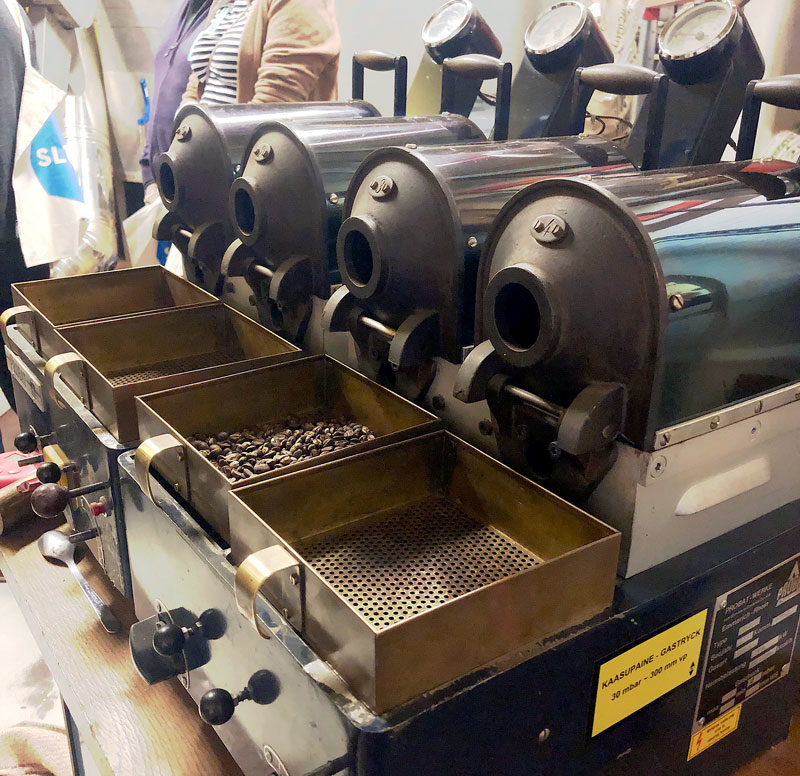 The roasting room of Kaffa Roastery looks delicious like a candy. A bright yellow wall and an unbelievable aroma of coffee, which fill all the senses. In the room there is a Probat roasting machine called the “Old Mrs.” that can roast 23kg of coffee in one go, and a smaller Probat for 10kg of coffee that is used for test roasts. This time we got a peek into the world of sample roasting with the guidance of roastmaster Jonna Korhonen.
The roasting room of Kaffa Roastery looks delicious like a candy. A bright yellow wall and an unbelievable aroma of coffee, which fill all the senses. In the room there is a Probat roasting machine called the “Old Mrs.” that can roast 23kg of coffee in one go, and a smaller Probat for 10kg of coffee that is used for test roasts. This time we got a peek into the world of sample roasting with the guidance of roastmaster Jonna Korhonen.
A sample roast is done to all new coffees when the best flavour profile for each coffee is being determined. On top of this, sample roasts are done also to coffees in the existing selection, when there’s a need to refine the flavour profiles. Since in coffee each crop is different, the flavour profile of green beans (unroasted coffee) might considerably change between harvests. For this reason the flavour profile of each coffee is good to check and validate when a new lot arrives, because the previous roasting profile might not be best suited to the new lot.
Jonna walked us through an 8 minute sample roast. We got to know what green beans smell and feel like before roasting, and witnessed how precise an artisanship it is to follow and control the beans over the whole duration of roasting. Jonna showed us how beans change colour over different phases of roasting. In this roast we waited for the first “crack” after which we allowed the aromas to even out for a minute, before the coffee was let out into the cooling bin in front of the roaster. The coffee should be cooled quickly so that the roasting process stops and doesn’t continue inside each bean.
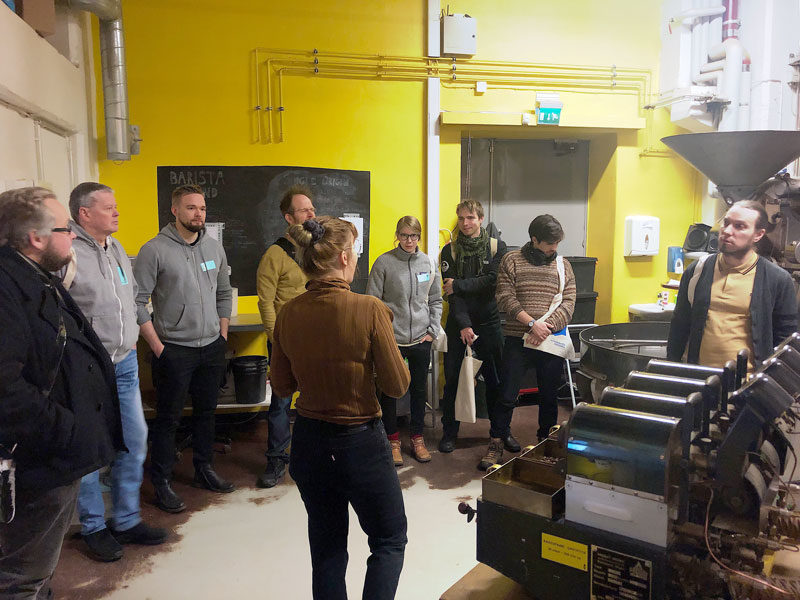
Kaffa Handshake and origin trip to Rwanda
At Michael Akins’ stand we discussed Kaffa Handshake and an origin trip they had made to Rwanda. With a wonderful presentation of pictures and storytelling, Mike took us through how a particular coffee farm in Rwanda operates, how they grow, harvest and process their coffees and how they evaluate the quality before the lots are ready to be sold. The trip was a part of the Kaffa Handshake project, the purpose of which is to get to know personally both the farms and co-operatives from which coffee is bought and with whom the agreements are made.
Kaffa Handshake protects the farmers economical situation, because through the project it is ensured that the farmers can pay themselves a decent wage. On top of this the agreement aims for long co-operation, with the goal to ensure the high quality of coffee from year to year. Aside from this, it is very important that the farmer can grow the coffee in an environmentally friendly way and sustain biodiversity in the surrounding forest. All work on the farms is ethically sustainable and child labour is not used. Moreover, no one is forced to work.
Since 2017 Kaffa has published the purchase prices of their coffees on their website, which ensures perfect transparency also towards the consumers.
Mike’s story from the trip to Rwanda along with the pictures can be found here.
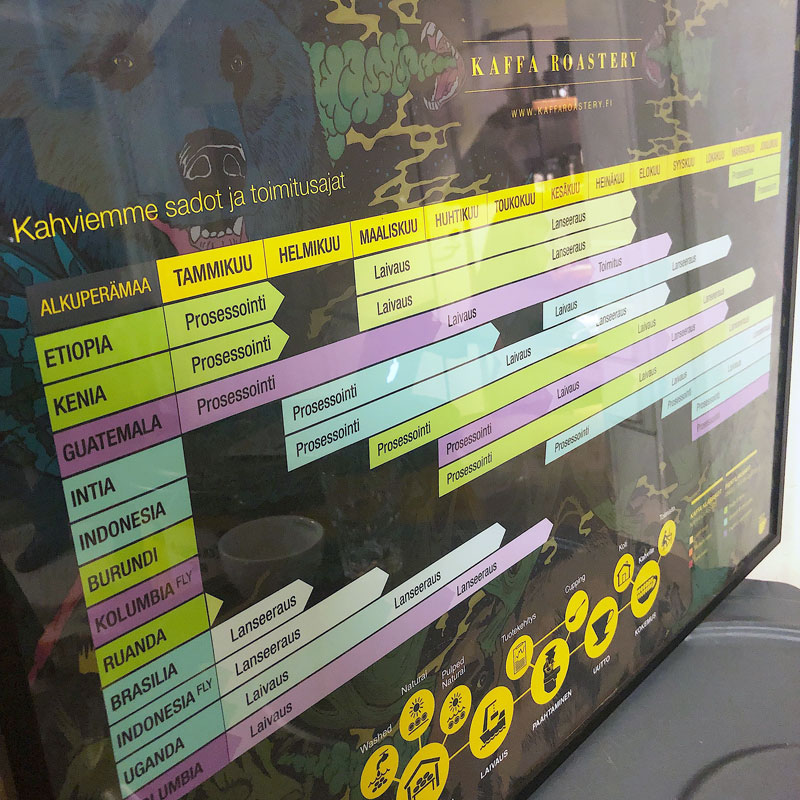
Home brewing methods
One can brew even better coffee at home by simply noting a few important aspects. In the Roastery Day’s event Sandra Halme dove in her workshop into the secrets of brewing coffee and how even with basic brewing devices one can enjoy coffee even better. In the workshop we got to taste the differences between coffees brewed by a typical coffee maker found at home and manual brewing methods both with light and dark roasted coffee.
As the dark roasted coffee (for the filter coffee maker) we had Herra Korppi and as the light roast (brewed with a Hario V60) a brand new coffee that was launched at this Roastery Day event, Rwanda Gitwe. This coffee will be available soon. As the filter coffee maker we used a Moccamaster Professional series thermos brewer and the manual brew was made with the pour over method using a Hario V60. As a grinder Sandra was using the brand new Wilfa Svart Uniform.
Sandra’s tips for brewing better coffee:
- Buy freshly roasted and harvested beans. Pay attention to traceability and
make sure the coffee is sourced ethically. - Grind your own beans, only the amount needed for your next brew. Test different grind sizes to find the optimal one for your palette.
- Store your beans in an airtight container, away from the light. Do not keep your coffee in the fridge, it will absorb unwanted scents and flavours. If you need to store your coffee for longer periods, feel free to freeze them.
- Remember the correct water to coffee ratio. A good basic rule for filter coffee is 6g of coffee per 100g of water.
- Pay attention to your water quality and temperature. If you want to dive deeper, make your own water using distilled/reverse osmosis water and adding the optimal mix of minerals for the perfect water for coffee.
- Keep your equipment clean, and descale your machines twice a year.
- Be consistent. Change only one variable at a time when adjusting your recipe.
Newer
#105 Kaffa Roastery: Guatemala El Cabro
Older
#104 Mokkamestarit: Brasil Daterra Sweet Collection
Comments (0)
Leave a reply
You must be logged in to post a comment.

